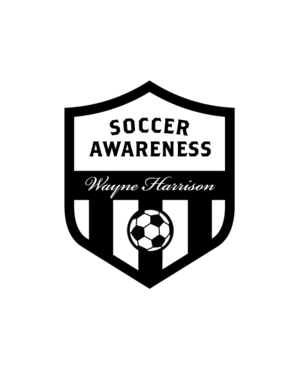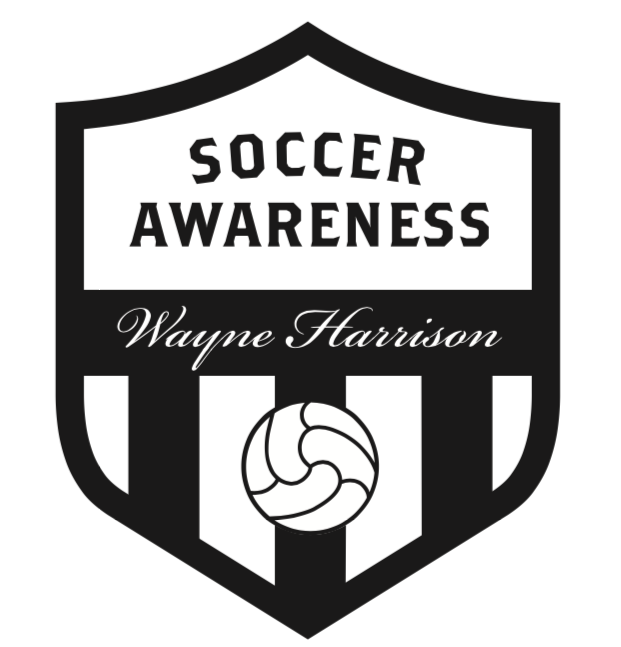Developing Circle Work Incorporating Passing And Combination Plays
/The following training session comes from Soccer Awareness eBook 1: 50 Fun and Developmental Coaching Sessions for 6 to 10 year olds. Get it in the Soccer Awareness eBook Store
To increase the players awareness instincts ask them to call the name of the player out who they will be passing to, before they receive the ball. This ensures they look to see who is free before they receive the ball so they know in advance who is free to receive.
One ball, (1) runs and passes to (4) and takes their place. (4) Takes the ball, runs and passes to (8) and so on.
Progression: Introduce two, then three, then four balls all going at the same time. “Awareness” of where each player is running is needed here so they don’t collide and where potential free players to receive are “before” you make the run and pass.
Coaching Points:
Good communication between the players.
Quality of the pass (timing, accuracy and weight).
Good first touch by the receiver.
Progression: Passer becomes a passive defender who puts the receiver under pressure. The receiver must move the ball away at an angle from the pressure on their first touch.
RUNNING WITH THE BALL
Running with the ball technique:
Head Up – look forward, observing options “before” receiving the ball using the A.I.A. training.
Good first touch out of feet, 2-3 touches maximum, not dribbling.
Run in a straight line, the quickest route.
Running Style, use the front foot to control the ball using the laces.
Decision: Where is the player taking the ball? In this case to (5) but (5) must try to decide as the ball is coming not after he or she has it. Identify who is free early.
Communication: Call the name of the player you are running the ball to.
Timing of take-over: (1) does not pass the ball to (5) but allows (5) to take it using the momentum of the ball. (5) must use a good first touch to get the ball out of the feet.
Progression: Two balls going at once then three.
You can divide the teams into two and have half the players working and half resting. Work a set time then change the players. Here the players are running with the ball then passing and then will get it back to go somewhere else to another player to work with.
Change the emphasis on the movement, running with the ball then during the run the player has to change direction with a clever dribble or turn, or they pass to an outside player, do an overlap around them and get the ball back, play a give and go with them and do a turn when they receive it back.
Many ways to develop this idea to get lots of touches on the ball, practicing running with the ball, receiving and turning with the ball and dribbling with the ball, combination plays, give and go’s, overlap runs and so on. The coach can use his or her imagination to make this work.
PLAYING 1 – 2’S
(1) runs with the ball and passes to (6) that plays a 1 – 2 then (1) passes to (5) who carries the move on. (1) Takes (5)’s place.
Progression: Use two balls at the same time. Awareness of other players in the same spaces comes into play in the movement of the inside players.
Coaching Points as in previous exercise.
If (1) passes to (6) and supports to the right of (6) then the pass is going to the left to (5) making sure we are working angles of support and passing and it lets (5) know the next pass is going there.
OVERLAP RUNS
(1) runs with the ball and plays a 1 – 2 with (6), then lays the ball off to (5). At the same time (6) makes an overlapping run around (5) to receive the pass in front. (1) Takes the place of (6). Develop the usual way.
Coaching Points as the previous exercise but this time the support run is in the form of an overlap.
Timing of the overlap run is important as is the timing of the pass into space in front of the overlapping player to receive.
As the ball is going to (7) he or she have already looked to see where (3) is to pass to. (3) Has already got into a support position to be ready to help (7) and at the same time is viewing the field to see who is available to receive a pass on the outside. As the ball travels to (3) ask them to call the name of the player they intend to pass to, before the ball gets to their feet. To do this they need to look at (7) as the ball arrives, look to see who is free then look back to see the ball coming.
(7) moves to an angled support position to receive the pass from (1). (3) Makes an angle off (7) to receive the ball then passes to (5).
Coaching Points:
Body shape when receiving;
Quality of pass (weight, timing and accuracy)
Support angles
A Good first touch.
Progression:
Three players are working together in the middle
Two pairs working together in the middle.
Pass in the same sequence each time into the middle players, awareness required as to where players are on the outside and also, or more particularly, in the middle where they can get in the way of each other in the two team situation.





















